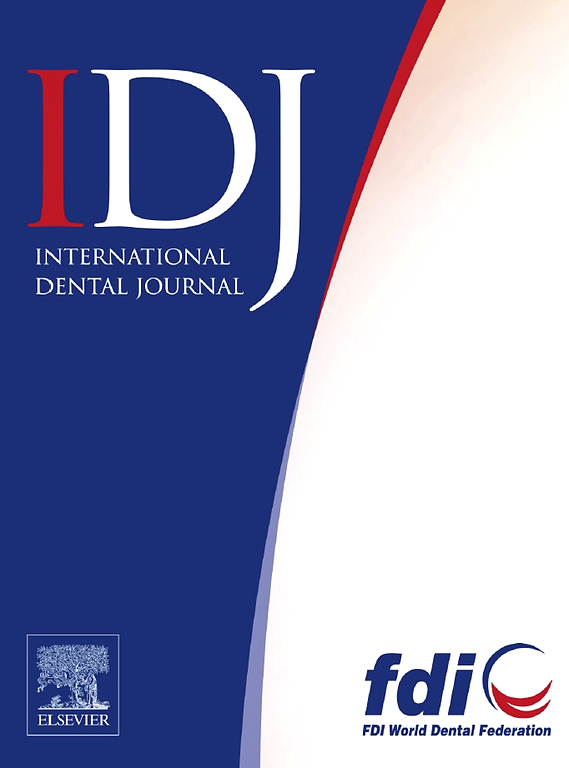Effect of Auxiliary Devices on the Accuracy of Complete‑Arch Implant Digital Impressions: An in Vitro Study
IF 3.7
3区 医学
Q1 DENTISTRY, ORAL SURGERY & MEDICINE
引用次数: 0
Abstract
Purpose
To evaluate the effectiveness of the auxiliary device in acquiring implant and soft tissue data using intraoral scanning and its influence on the accuracy of digital impressions for edentulous implants.
Methods
Three standardized implant models for edentulism, categorized as 2-4, 2-5 and 2-4-6, were designed and printed based on the distribution of implants. Various auxiliary devices were designed for each model, and an artificial gingiva with cube-like marking points was created to test the completeness of soft tissue information capture. The models were scanned using an extraoral model scanner to obtain accurate baseline data. Intraoral scans (Trios 4) were performed before and after adding auxiliary devices. The scan data were evaluated using inspection software. The linear distances of center point of upper plane between scan body was calculated. The Shapiro–Wilk normality test, independent-samples t test, and Mann–Whitney nonparametric test were used for statistical analysis. Statistical significance was set at α = 0.05.
Results
The trueness and precision of most loci improved with the inclusion of auxiliary devices, surpassing their counterparts without such devices. Notably, trueness advanced in: the 2-4 group using 2.5-mm-wide smooth-surface (W2.5-S) for the longest span (#14-#24) [decreased from (0.123 ± 0.034) mm to (0.081 ± 0.033) mm]; the 2-5 group employing 2.5-mm-wide cube-like (W2.5-C) and hemisphere-like(W2.5-H) devices for the longest span (#15-#25), (decreased from [0.155 ± 0.061] mm to [0.028 ± 0.017] mm and [0.035 ± 0.019] mm); and the 2-4-6 group with W2.5-C and W2.5-H devices for loci #16-#24 [decreased from (0.091 ± 0.056) mm to (0.055 ± 0.033 mm and (0.054 ± 0.041) mm] and #16-#26 (decreased from [0.148 ± 0.112] mm to [0.088 ± 0.041] mm and [0.084 ± 0.047] mm) (P < .05). Adding the devices did not affect the root-mean-square values of the soft tissue marker points.
Conclusions
The use of auxiliary devices enhances the accuracy of digital impressions for edentulous implant restorations obtained using intraoral scanners while also capturing complete soft tissue information.
辅助装置对全弓种植体数字印模准确性的影响:一项体外研究
目的评价口腔内扫描辅助装置获取种植体和软组织数据的有效性及其对无牙种植体数字印模准确性的影响。方法根据种植体的分布,设计并打印出2-4、2-5和2-4-6 3种标准化的全牙种植体模型。为每个模型设计了不同的辅助装置,并创建了一个具有立方体标记点的人工牙龈,以测试软组织信息捕获的完整性。使用口外模型扫描仪对模型进行扫描以获得准确的基线数据。在添加辅助装置前后分别进行口内扫描(Trios 4)。使用检查软件对扫描数据进行评估。计算了扫描体之间上平面中心点的直线距离。采用Shapiro-Wilk正态性检验、独立样本t检验和Mann-Whitney非参数检验进行统计分析。统计学意义设为α = 0.05。结果添加辅助装置后,大部分基因座的准确性和准确性均有所提高,优于未添加辅助装置的对照组。值得注意的是,正确率提高:2-4组使用2.5 mm宽的光滑表面(W2.5-S)进行最长跨度(#14-#24)[从(0.123±0.034)mm下降到(0.081±0.033)mm];2-5组采用2.5 mm宽的立方体状(W2.5-C)和半球状(W2.5-H)装置,最长跨度(#15-#25)从[0.155±0.061]mm减少到[0.028±0.017]mm和[0.035±0.019]mm;使用W2.5-C和W2.5-H装置的2-4-6组16 ~ 24号位点[从(0.091±0.056)mm减少到(0.055±0.033 mm和(0.054±0.041)mm]和16 ~ 26号位点[从[0.148±0.112]mm减少到[0.088±0.041]mm和[0.084±0.047]mm] (P < 0.05)。添加器械不影响软组织标记点的均方根值。结论辅助装置的使用提高了口腔内扫描仪获得的无牙种植体修复数字印模的准确性,同时也获得了完整的软组织信息。
本文章由计算机程序翻译,如有差异,请以英文原文为准。
求助全文
约1分钟内获得全文
求助全文
来源期刊

International dental journal
医学-牙科与口腔外科
CiteScore
4.80
自引率
6.10%
发文量
159
审稿时长
63 days
期刊介绍:
The International Dental Journal features peer-reviewed, scientific articles relevant to international oral health issues, as well as practical, informative articles aimed at clinicians.
 求助内容:
求助内容: 应助结果提醒方式:
应助结果提醒方式:


